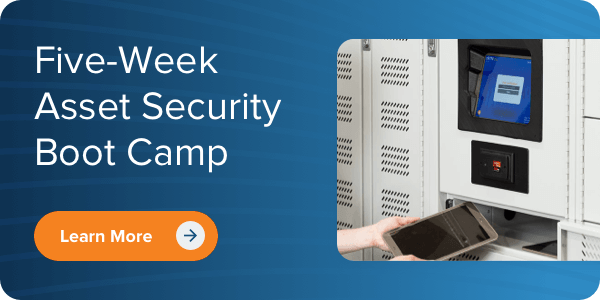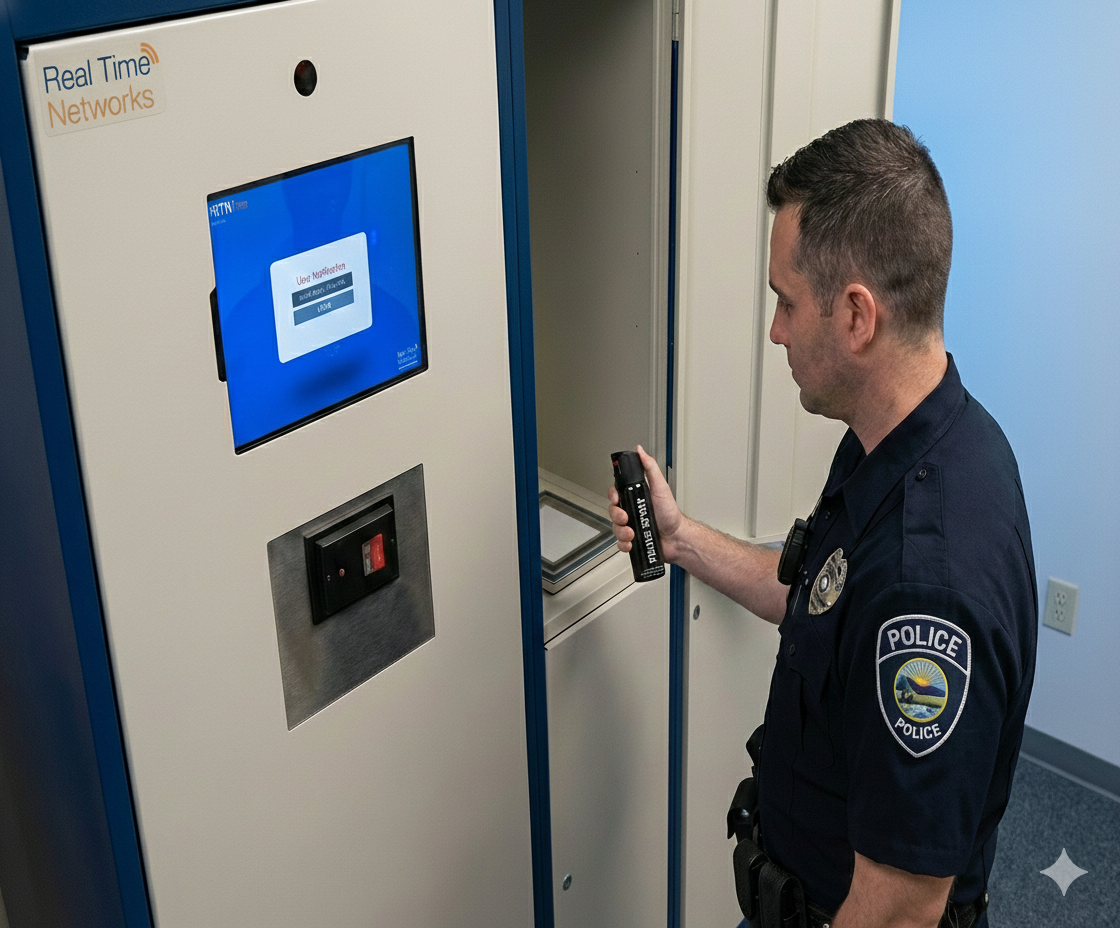By Jay Palter | June 24, 2021
Even the most in-the-know security professional can be forgiven for not knowing every single real-time location system (RTLS) technology on the market. The options are constantly changing. New technologies emerge, engineers discover new use cases for old technologies, and there is always something you haven’t seen before.
That is why we’ve assembled this ultimate RTLS technology guide. This guide compiles everything busy professionals need to know about the RTLS safety and security landscape today. It will help you understand what is out there and identify the right technology to solve your company’s unique challenges.
Real-Time Location Systems
Real-time location systems track and manage assets, keys, or people as they move through an indoor facility. These systems can be thought of as indoor GPS because they can provide a similar level of location and movement data, both in real time and in detailed tracking histories.
RTLS Components
While the specific technical standards and applications vary, all RTLS platforms share the same basic hardware and software components:
- Transmitters: An RTLS transmitter attaches to a person or asset and sends identification and location data to receivers over a wireless signal. Transmitters are also sometimes called tags, transponders, or badges, depending on their form factor.
- Receivers: RTLS receivers positioned around your facility receive signals from tagged assets and pinpoint their location. Depending on the wireless standard used, they can determine location either by the tag’s proximity to receivers or through a mathematical process called trilateration. Locations are calculated based on the time it takes signals to reach three or more receivers.
- Management portal: The RTLS receivers send the location data they collect to a central management system. Human operators and connected computer systems can use this central portal to analyze tracking data.
Different tracking systems offer different capabilities, but broadly speaking, every real-time location system will offer some combination of real-time tracking and longer-term logging. Many systems have other capabilities, such as the option to configure “geofences.” A geofence is a virtual boundary created by RTLS receivers in an open facility. When a tagged person or asset crosses one of these boundaries, the system issues an alert to security or other designated responders.
RTLS Use Cases
Real-time location services have many use cases in safety and security, including:
Asset management
RTLS tracking is frequently an essential function provided by asset management systems. These systems usually consist of a storage cabinet in which RTLS-tagged assets are stored. An attached access control system authenticates users who wish to sign an asset in or out. Some storage lockers have a built-in RTLS tool called “content surveillance,” which can verify that a user returns the same high-value asset that they signed out.
Access control
Access control systems authorize employees and visitors to move through security checkpoints. Or, if you’re using geofencing, they record movements across those virtual perimeters. Employees carry RTLS badges that authenticate them and provide location data when you want to track them in real time.
Key Management and Key Control
Monitoring keys in real-time across an entire facility is a great use for real-time location systems. Key chains, master keys, and access cards can all be monitored by an RTLS. You can receive a notification or ring an alarm if a key fails to meet a check-in or check-out deadline or if someone attempts to take the key outside a permitted area.
Popular RTLS Wireless Standards
You can use many different wireless standards in an RTLS. Each has its pros and cons. Here are eight of the most popular RTLS wireless standards used today.
1. Passive RFID
Radiofrequency identification (RFID) tags come in two varieties: passive and active. Passive tags are smaller and have no onboard battery. They receive power wirelessly when someone brings the tag within several meters of a receiver. In a tradeoff for their shorter range, passive RFID tags cost much less and are more durable than other RTLS tag types.
RFID signals transmit through most common building materials, but water and metal can interfere with them. Passive RFID is most suitable for short-range, presence-based RTLS use cases.
2. Active RFID
Active RFID tags use an onboard battery but are otherwise functionally similar to their passive counterparts. They are larger, heavier, and more expensive. But in return, they have a much longer read range, sometimes up to 100 meters in ideal conditions. Like passive RFID, active RFID signals have trouble transmitting through water or metal surfaces.
3. Infrared (IR)
IR signals, such as those used by television remotes, can also be used in an RTLS. They’re suitable for different use cases than RFID because they require line of sight with receivers.
An IR RTLS is an excellent choice when you need low-cost, room-level location intelligence. If your goal is to identify the room in which an asset is located, it can be a cost-effective choice.
4. Wi-Fi positioning service (WPS)
Wi-Fi access points used to provide internet service can also act as a real-time location system to detect devices with a wireless network card. WPS has a read range similar to active RFID. However, it can usually only detect locations to within approximately 10 meters. Also, be aware that if you have any dead spots in your Wi-Fi internet coverage, you will have dead spots in your WPS location service.
5. Bluetooth
Bluetooth is a short-range wireless communication standard popularly used to pair mobile devices, headsets, computers, and other electronics. Most smartphones, tablets, and other portable electronics already come with a Bluetooth antenna.
You can often use those existing devices as part of a Bluetooth RTLS program. Bluetooth’s short read range of fewer than 10 meters only makes it suitable for specific applications. Also, be aware that Bluetooth uses part of an unlicensed radio frequency band nicknamed the “garbage band,” which might make Bluetooth prone to interference in the future.
6. Ultrasound
Ultrasound waves are a popular alternative to radio and light-based RTLS. They provide exact locations, but only at room level since walls and other solid surfaces block the sound waves. Ultrasound can also be hard to use in noisy environments where other signals in the ultrasonic wavelengths are in use.
7. Ultra-wideband (UWB)
UWB real-time location systems are currently some of the most precise on the market, usually locating a tag to within a meter. UWB uses a range of frequencies, not just one like Bluetooth or IR. UWB signals are powerful and not prone to interference.
These benefits come at a much higher price point than the alternatives. Because UWB works across a broader range of the electromagnetic spectrum, it can also be complicated to fine-tune UWB signals in indoor environments where you use other wireless services. UWB’s precision also tends to drop off at longer ranges.
Ultra-wideband RTLSs are most suitable for indoor environments where exact asset locations are needed up to a medium range. Their cost also makes them most ideal for environments where security breaches are high risk and potentially costly.
8. Cellular
Last but not least, cellular bands (GSM, CDMA) can also provide real-time location service. Much like Bluetooth, one of the main advantages of using cellular for location service is that many devices, such as smartphones, already come equipped with cellular antennas, which can be used as part of an RTLS detection network.
However, cellular location service relies on a connection to outdoor cellular antennas. Cell service is frequently not reliable in large indoor facilities and may require installing expensive repeater antennas to provide adequate coverage. Cellular RTLS has a very long range but is less precise than many alternatives, often only locating a target within 10 meters.
RTLS Is a Cornerstone of a Reliable Physical Security Program
As you can see, each of these standards is suited to different use cases. Maybe you only want room-level tracking, so you’ll want to choose a less expensive line of sight standard. Perhaps you want a high-precision, low-interference option and choose UWB.
Or maybe you want a cost-effective solution for a wide range of asset tracking and key management and choose RFID. Regardless of which standard ends up suiting you best, you should now have a better understanding of the different available technologies so you can make the correct choice the first time.Do you want to learn more about how real-time location systems can improve your safety and security program? Check out our 5-Week Asset Security Boot Camp.
Subscribe to our blog

Jay Palter
Vice President of Marketing & Partnerships





